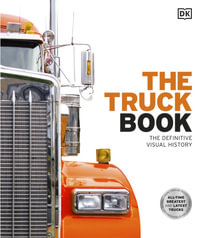
Finite Element Analysis for Design Engineers
By: Paul M. Kurowski
Hardcover | 1 December 2016 | Edition Number 2
At a Glance
284 Pages
Revised
22.9 x 15.2 x 2.39
Hardcover
$238.25
or 4 interest-free payments of $59.56 with
orAims to ship in 10 to 15 business days
When will this arrive by?
Enter delivery postcode to estimate
- Acknowledgements
- Preface
- Chapter 1:?Introduction
- 1.1 What Is Finite Element Analysis?
- 1.2 What Is the Place of Finite Element Analysis Among Other Tools of Computer-Aided Engineering?
- 1.3 Fields of Application of FEA and Mechanism Analysis; Differences Between Structures and Mechanisms
- 1.4 Fields of Application of FEA and CFD
- 1.5 What Is “FEA for Design Engineers”?
- 1.6 Importance of Hands-On Exercises
- Chapter 2:?From CAD Model to Results of Finite Element Analysis
- 2.1 Formulation of the Mathematical Model
- 2.2 Selecting Numerical Method to Solve the Mathematical Model
- 2.2.1 Selected Numerical Methods in Computer Aided Engineering
- 2.2.2 Reasons for the Dominance of Finite Element Method
- 2.3 The Finite Element Model
- 2.3.1 Meshing
- 2.3.2 Formulation of Finite-Element Equations
- 2.3.3 Errors in FEA Results
- 2.4 Verification and Validation of FEA Results
- Chapter 3:?Fundamental Concepts of Finite Element Analysis
- 3.1 Formulation of a Finite Element
- 3.1.1 Closer Look at Finite Element
- 3.1.2 Requirements to be Satisfied by Displacement Interpolation Functions
- 3.1.3 Artificial Restraints
- 3.2 The Choice of Discretization
- 3.3 Types of Finite Elements
- 3.3.1 Element Dimensionality
- 3.3.2 Element Shape
- 3.3.3 Element Order and Element Type
- 3.3.4 Summary of Commonly Used Elements
- 3.3.5 Element Modeling Capabilities
- Chapter 4:?Controlling Discretization Errors
- 4.1 Presenting Stress Results
- 4.2 Types of Convergence Process
- 4.2.1 h Convergence by Global Mesh Refinement
- 4.2.2 h Convergence Process by Local Mesh Refinement
- 4.2.3 Adaptive h Convergence Process
- 4.2.4 p Convergence Process
- 4.2.5 The Choice of Convergence Process
- 4.3 Discretization Error
- 4.3.1 Convergence Error
- 4.3.2 Solution Error
- 4.4 Problems With Convergence
- 4.4.1 Stress Singularity
- 4.4.2 Displacement Singularity
- 4.5 Hands-On Exercises
- 4.5.1 Hollow Plate (Figure 4.33)
- 4.5.2 L Bracket (Figure 4.34)
- 4.5.3 2D Beam (Figure 4.35)
- Chapter 5:?Finite Element Mesh
- 5.1 Meshing Techniques
- 5.1.1 Manual Meshing
- 5.1.2 Semiautomatic Meshing
- 5.1.3 Automeshing
- 5.2 Mesh Compatibility
- 5.2.1 Compatible Elements
- 5.2.2 Incompatible Elements
- 5.2.3 Forced Compatibility
- 5.3 Common Meshing Problems
- 5.3.1 Element Distortion
- 5.3.2 Mesh Adequacy
- 5.3.3 Element Mapping to Geometry
- 5.3.4 Incorrect Conversion to Shell Model
- 5.4 Hands-On Exercises
- 5.4.1 BRACKET01 (Figure 5.24)
- 5.4.2 Cantilever Beam (Figure 5.25)
- Chapter 6:?Modeling Process
- 6.1 Modeling Steps
- 6.1.1 Definition of the Objective of Analysis
- 6.1.2 Selection of the Units of Measurement
- 6.1.3 Geometry Preparation
- 6.1.4 Definition of Material Properties
- 6.1.5 Definition of Boundary Conditions
- 6.2 Modeling Techniques
- 6.2.1 Mirror Symmetry and Antisymmetry Boundary Conditions
- 6.2.2 Axial Symmetry
- 6.2.3 Cyclic Symmetry
- 6.2.4 Realignment of Degrees of Freedom
- 6.3 Hands-On Exercises
- 6.3.1 BRACKET02-1 (Figure 6.14)
- 6.3.2 BRACKET02-2 (Figure 6.15)
- 6.3.3 BRACKET02-3 (Figure 6.16)
- 6.3.4 Shaft (Figure 6.17)
- 6.3.5 Pressure Tank (Figure 6.18)
- 6.3.6 RING (Figure 6.19)
- 6.3.7 Link (Figure 6.20)
- Chapter 7:?Nonlinear Static Structural Analysis
- 7.1 Classification of Different Types of Nonlinearities
- 7.2 Large Displacement Analysis
- 7.3 Membrane Stress Stiffening
- 7.4 Contact
- 7.5 Hands-On Exercises
- 7.5.1 Cantilever Beam (Figure 7.1)
- 7.5.2 Torsion Shaft (Figure 7.7)
- 7.5.3 Round Plate (Figure 7.12)
- 7.5.4 LINK (Figure 7.17)
- 7.5.5 Sliding Support (Figure 7.18)
- 7.5.6 CLAMP01 (Figure 7.21)
- 7.5.7 CLAMP02 (Figure 7.26)
- 7.5.8 Shrink Fit (Figure 7.27)
- Chapter 8:?Nonlinear Material Analysis
- 8.1 Review of Nonlinear Material Models
- 8.2 Elastic–Perfectly Plastic Material Model
- 8.3 Use of Nonlinear Material to Control Stress Singularity
- 8.4 Other Types of Nonlinearities
- 8.5 Hands-On Exercises
- 8.5.1 BRACKET NL (Figure 8.3)
- 8.5.2 L BRACKET (Figure 8.7)
- Chapter 9:?Modal Analysis
- 9.1 Differences Between Modal and Static Analysis
- 9.2 Interpretation of Displacement and Stress Results in Modal Analysis
- 9.3 Modal Analysis With Rigid Body Modes
- 9.4 Importance of Supports in Modal Analysis
- 9.5 Applications of Modal Analysis
- 9.5.1 Finding Modal Frequencies and Associated Shapes of Vibration
- 9.5.2 Locating “Weak Spots” in Structure
- 9.5.3 Modal Analysis Provides Input to Vibration Analysis
- 9.6 Prestress Modal Analysis
- 9.7 Symmetry and Antisymmetry Boundary Conditions in Modal Analysis
- 9.8 Convergence of Modal Frequencies
- 9.9 Meshing Consideration for Modal Analysis
- 9.10 Hands-On Exercises
- 9.10.1 Tuning Fork (Figure 9.12)
- 9.10.2 Box (Figure 9.1)
- 9.10.3 Airplane (Figure 9.2)
- 9.10.4 Ball (Figure 9.4)
- 9.10.5 Link (Figure 9.5)
- 9.10.6 Helicopter Blade (Figure 9.7)
- 9.10.7 Column (Figure 9.8)
- 9.10.8 Bracket (Figure 9.10)
- Chapter 10:?Buckling Analysis
- 10.1 Linear Buckling Analysis
- 10.2 Convergence of Results in Linear Buckling Analysis
- 10.3 Nonlinear Buckling Analysis
- 10.4 Summary
- 10.5 Hands-On Exercises
- 10.5.1 Notched Column—Free End (Figure 10.1)
- 10.5.2 Notched Column—Sliding End (Figure 10.2)
- 10.5.3 Button (Figure 10.11)
- 10.5.4 Curved Column (Figure 10.15)
- 10.5.5 Stand (Figure 10.16)
- 10.5.6 CURVED_SHEET (Figure 10.17)
- Chapter 11:?Vibration Analysis
- 11.1 Modal Superposition Method
- 11.2 Time Response Analysis
- 11.3 Frequency Response Analysis./li>
- 11.4 Nonlinear Vibration Analysis
- 11.5 Hands-On Exercises
- 11.5.1 Hammer Impulse Load (Figure 11.2)
- 11.5.2 Hammer Beating (Figure 11.2)
- 11.5.3 ELBOW_PIPE (Figure 11.7)
- 11.5.4 Centrifuge (Figure 11.10)
- 11.5.5 PLANK (Figure 11.13)
- Chapter 12:?Thermal Analysis
- 12.1 Heat Transfer Induced by Prescribed Temperatures
- 12.2 Heat Transfer Induced by Heat Power and Convection
- 12.3 Heat Transfer by Radiation
- 12.4 Modeling Considerations in Thermal Analysis
- 12.5 Challenges in Thermal Analysis
- 12.6 Hand-On Exercises
- 12.6.1 Bracket (Figure 12.1)
- 12.6.2 Heat Sink (Figure 12.2)
- 12.6.3 Channel (Figure 12.4)
- 12.6.4 Space Heater (Figure 12.6)
- Chapter 13:?Implementation of Finite Element Analysis in the Design Process
- 13.1 Differences Between CAD and FEA Geometry
- 13.1.1 Defeaturing
- 13.1.2 Idealization
- 13.1.3 Cleanup
- 13.2 Common Meshing Problems
- 13.3 Mesh Inadequacy
- 13.4 Integration of CAD and FEA Software
- 13.4.1 Stand-Alone FEA Software
- 13.4.2 FEA Programs Integrated With CAD
- 13.4.3 Computer-Aided Engineering Programs
- 13.5 FEA Implementation
- 13.5.1 Positioning of CAD and FEA Activities
- 13.5.2 Personnel Training
- 13.5.3 FEA Program Selection
- 13.5.4 Hardware Selection
- 13.5.5 Building Confidence in the FEA
- 13.5.6 Return-On Investment
- 13.6 FEA Project
- 13.6.1 Major Steps in FEA Project
- 13.6.2 FEA Report
- 13.6.3 Importance of Documentation and Backups
- 13.6.4 Contracting Out FEA Services
- 13.6.5 Common Errors in the FEA Management
- Chapter 14:?Misconceptions and Frequently Asked Questions
- 14.1 FEA Quiz
- 14.2 Frequently Asked Questions
- Chapter 15:?FEA Resources
- References
- Chapter 16:?Glossary of Terms
- Chapter 17:?List of Exercises
- Index
- About the Author
ISBN: 9780768082319
ISBN-10: 0768082315
Published: 1st December 2016
Format: Hardcover
Language: English
Number of Pages: 284
Audience: Professional and Scholarly
Publisher: SAE International
Country of Publication: US
Edition Number: 2
Edition Type: Revised
Dimensions (cm): 22.9 x 15.2 x 2.39
Weight (kg): 0.88
Shipping
| Standard Shipping | Express Shipping | |
|---|---|---|
| Metro postcodes: | $9.99 | $14.95 |
| Regional postcodes: | $9.99 | $14.95 |
| Rural postcodes: | $9.99 | $14.95 |
How to return your order
At Booktopia, we offer hassle-free returns in accordance with our returns policy. If you wish to return an item, please get in touch with Booktopia Customer Care.
Additional postage charges may be applicable.
Defective items
If there is a problem with any of the items received for your order then the Booktopia Customer Care team is ready to assist you.
For more info please visit our Help Centre.
You Can Find This Book In

Today's Technician: Automotive Electricity and Electronics
8th Edition - Classroom and Shop Manual Pack
Spiral Ringed Book
RRP $174.95
$141.75
OFF






















